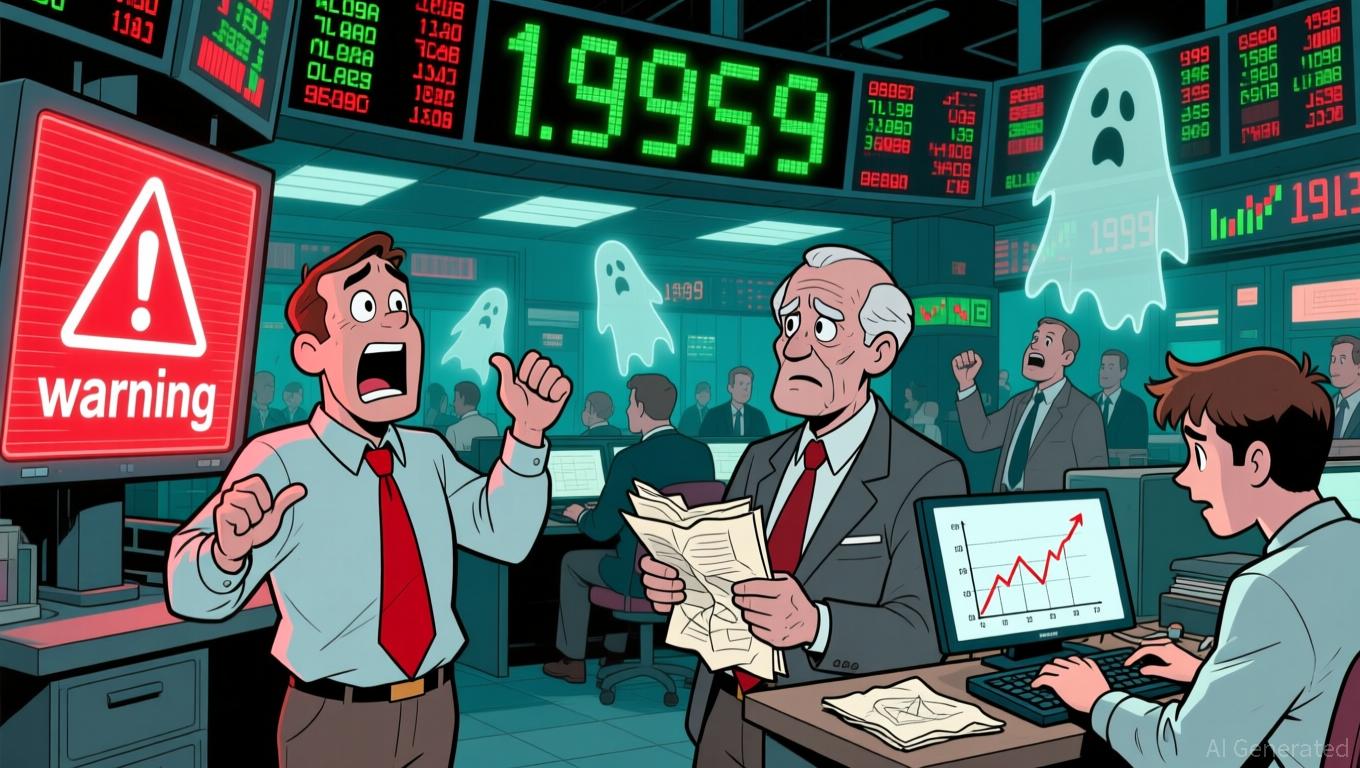Fed’s QE Strategy: Could AI Mania Lead to a Repeat of the 1999 Bubble?
- Billionaire Ray Dalio warns Fed's shift to QE risks inflating an AI-driven bubble akin to 1999's dot-com crash. - He criticizes reinvesting MBS proceeds into Treasury bills as monetizing debt while cutting rates amid large fiscal deficits. - Analysts highlight risks of reduced T-bill supply, lower yields, and repo market strains from Fed's $15B/month Treasury demand. - AI sector valuations and corporate earnings will test Dalio's concerns as November inflation data and PMI reports approach.
Billionaire investor Ray Dalio has sounded a serious alarm regarding the Federal Reserve’s latest policy direction, cautioning that its shift away from quantitative tightening (QT) toward a version of quantitative easing (QE) could fuel a speculative bubble similar to the late 1990s dot-com surge, as reported by a
The central bank’s recent decision to end its QT initiative and keep its balance sheet steady has sparked concerns about potential market instability, according to a

The next few weeks will put these perspectives to the test. Investors are monitoring November’s inflation numbers and manufacturing PMI data for hints about the Fed’s future policy decisions, as indicated by the
Disclaimer: The content of this article solely reflects the author's opinion and does not represent the platform in any capacity. This article is not intended to serve as a reference for making investment decisions.
You may also like
Bitcoin Latest Updates: Crypto Market Sees Intense Battle Between Bulls and Bears as Fear Index Drops to Lowest Point in Six Months
- Crypto fear index hit 21 (six-month low) on Nov 4, 2025, driven by volatility, volume spikes, and social sentiment, per CoinMarketCap. - Bitcoin fell below $100,000 amid $2B liquidations and $137M ETF outflows, while 45,700 BTC ($5B) were panic-sold to exchanges. - Regulatory pressures (Australia sanctions, UK stablecoin rules) and bearish leveraged trades ($140M short positions) deepened selloff. - Market remains divided: CZ and AI models signal accumulation, but Galaxy cuts Bitcoin target to $120K amid

Supreme Court Questions Trump’s Emergency Trade Authority

Global Liquidity Divides AI Leaders: Genie Faces Challenges While Palantir Rises
- Global liquidity boosts AI projects, with Genie Energy and Palantir as key beneficiaries despite market volatility. - Genie Energy’s Q3 2025 revenue rose 24% to $138. 3M , driven by higher energy sales, but gross profit fell 21% due to rising commodity costs. - Palantir reported $1.18B Q3 revenue, exceeding estimates, with 121% U.S. commercial growth and $10B U.S. Army AI contract. - Analysts highlight divergent AI trajectories: Genie faces margin pressures from energy costs, while Palantir’s government

OpenAI's $1.4 Trillion AI Risk: Will Altman's Refusal of a Bailout Succeed?
- OpenAI CEO Sam Altman rejected "too big to fail" claims, asserting the AI firm rejects government bailouts and state intervention in business decisions. - A $38B AWS partnership provides OpenAI with 100K+ Nvidia GPUs and millions of CPUs, diversifying cloud reliance after a $500B PBC restructuring with Microsoft . - Altman projects $20B annual revenue by year-end and $100B+ by 2030, despite $1.4T infrastructure spending plans raising sustainability concerns among analysts. - Political scrutiny grows as F
